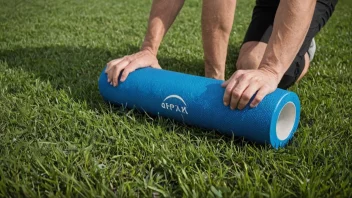Cross-training has become a popular strategy for athletes looking to enhance their performance across various sports, particularly in winter sports such as skiing, snowboarding, and ice skating. This approach not only improves overall athleticism but also reduces the risk of injury, making it an essential training component for winter sports enthusiasts.
One of the primary benefits of cross-training is its ability to build strength and endurance. By engaging in different physical activities, athletes can target various muscle groups that may not be fully utilized in their primary sport. For instance, a skier could benefit from activities like cycling or swimming, which help develop cardiovascular fitness and muscular endurance. This diversified training helps ensure that athletes are well-rounded and capable of handling the demands of their sport.
Moreover, cross-training can significantly enhance flexibility and balance, two crucial factors for winter sports performance. Activities such as yoga or dance can improve an athlete's core stability and flexibility, reducing the likelihood of strains and sprains during high-impact winter activities. Research indicates that athletes who incorporate flexibility training into their routine are less prone to injuries, allowing them to maintain consistent training schedules.
Another critical aspect of cross-training is its role in preventing burnout and mental fatigue. Engaging in a variety of activities keeps training fresh and exciting, which can help maintain motivation. For winter sports athletes who often face long training seasons, mixing in different workouts can prevent the monotony that can lead to decreased performance and enthusiasm for the sport.
Cross-training also allows athletes to work on specific skills that can directly translate to improved performance in their primary sport. For instance, a snowboarder may take up skateboarding during the off-season to improve balance and coordination. Similarly, a biathlete can gain strength and stamina through running or rowing, directly benefiting their performance during races.
Additionally, cross-training can aid recovery and rehabilitation after injuries. Engaging in low-impact activities allows athletes to stay active while recovering, reducing downtime and helping to maintain fitness levels. This aspect is particularly beneficial for winter sports athletes who are prone to injuries due to the high-impact nature of their activities.
In conclusion, cross-training offers numerous benefits for winter sports athletes, including improved strength, endurance, flexibility, and balance while also helping to prevent burnout and injuries. By incorporating a variety of training methods into their routines, athletes can enhance their overall performance and enjoy their sport more fully. Embracing cross-training not only prepares athletes for the physical challenges of winter sports but also fosters a lifelong passion for fitness and outdoor activities.






